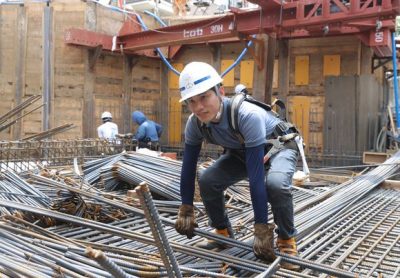[동아시아포럼] ‘기회의 땅’ 일본이 베트남 노동자들의 외면을 받고 있다
일본 이주 노동력 최대 공급원, 베트남 노동 착취와 엔저 현상으로 일본 기피 증가 한국 고용허가제 같은 이주 노동자 제도 개선 필요
[동아시아포럼]은 EAST ASIA FORUM에서 전하는 동아시아 정책 동향을 담았습니다. EAST ASIA FORUM은 오스트레일리아 국립대학교(Australia National University) 크로퍼드 공공정책 학교(Crawford School of Public Policy) 산하의 공공정책과 관련된 정치, 경제, 비즈니스, 법률, 안보, 국제관계 및 사회에 대한 연구·분석 플랫폼입니다.
저희 폴리시코리아(The Policy Korea)와 영어 원문 공개 조건으로 콘텐츠 제휴가 진행 중입니다.
베트남 이주 노동자들에게 있어 일본은 더 이상 매력적인 나라가 아니다. 엔화 가치 하락은 물론 수면 위로 떠오른 노동 착취 문제 때문이다. 베트남은 일본 3D 노동 시장을 뒷받침하는 최대 공급원이자 전체 일본 이주 노동자의 절반 이상을 차지한다. 이렇다 보니 베트남인의 일본 노동 시장 외면은 향후 일본 경제의 악영향을 줄 수 있어 정부 차원의 제도 개선이 논의되고 있다.
3D 업종에 집중된 베트남 노동자
2019년 BBC 저널리스트 스테파니 헤가티(Stephanie Hegarty)는 일본의 기술 인턴 연수 프로그램에 따라 고용된 외국인 근로자들이 착취 당하고 있다고 보도했다. 해당 보도 이후 관련 논의를 이어오던 일본 정부는 지난 4월 기존의 이주 노동자 프로그램을 폐지하고 새로운 시스템으로 대체하는 등 제도 개선에 착수했다. 일본 정부는 올해 말 최종 보고서를 제출받아 오는 2024년 새로운 이주 노동자 제도를 공식화할 예정이다.

일본 법무성 통계에 따르면 일본에 거주하는 외국인 수는 지난해 말 307만 명으로 사상 최고치를 기록했다. 베트남뿐만 아니라 다양한 국적의 이주 노동자들이 일본 노동 시장에 기여하고 있다. 일본에 거주하는 외국인 노동자 중 32만5천 명의 ‘기능 실습생’과 13만1천 명의 ‘특정 기능 노동자’는 일본 경제를 뒷받침하는 데 중요한 역할을 담당하고 있다. 그러나 이들에 대한 처우는 열악하기 그지없다. 기술을 배우면서 일하는 것을 전제로 한다고는 하지만, 기술 교육이나 거주 지원에 대한 대책은 전무한 상태에서 단순히 값싼 이주 노동력으로 이용당하고 있다. 일본의 외국인 노동자 대부분은 식음료 제조, 봉제, 건설, 청소, 농업 등 노동 공급이 부족한 노동 집약적 산업에서 근로 중이다. 즉 일본인이 기피하는 일을 45만 명의 외국인 노동자가 대신하고 있는 것이다.
일본 외국인 노동자의 가장 큰 공급 국가는 베트남이다. 베트남인들은 일본 기술 인턴 연수생의 54%와 특정 기능 인력의 59%를 차지하고 있다. 단순히 이주 노동자만 증가한 것이 아니다. 이들과 거주하는 가족의 수까지 합산하면 현재 일본 내 베트남인 거주자 수는 49만 명으로, 지난 10년간 10배 가까이 증가했다.
엔저 현상으로 베트남 이주 노동자 실질 급여 감소
일본 산업 전문가들은 앞으로도 베트남이 일본 내 이주 노동자의 최대 공급원이 될 것이라 예상한다. 하지만 엔저 현상으로 인해 상황이 급변했다. 지난해 10월 엔·달러 환율은 150엔으로, 32년 만에 최저치를 기록했다. 이와 동시에 베트남 동화당 엔화 가치도 하락했다. 가속화된 엔저 현상으로 인해 베트남 이주 노동자들이 받는 실질 급여 가치가 약 10~20% 감소했다. 이와 관련해 하노이의 인력 서비스 기업 히마와리 서비스 CEO 응웬투이린(Nguyen Thuy Linh)은 “엔화 약세 이후 일본 이주 노동자를 모집하는 업무가 굉장히 힘들어졌다”고 밝혔다.
다만 엔저 현상에도 불구하고 베트남인에게 일본은 여전히 기회의 땅이다. 일본은 지난 30년 동안 사실상 임금 인상이 없었던 저임금 선진국이지만, 현재 월 평균 임금이 200~300달러 수준인 베트남 노동자에겐 상대적으로 고임금을 제공받을 수 있는 국가기 때문이다. 하지만 상황이 점차 변하고 있다.
그러나 이마저도 오래 가지는 못할 것으로 보인다. 베트남 통계청에서 발표한 평균 임금과 일본 후생노동성이 발표한 기술 인턴 연수생 및 특정 기능공의 평균 임금 분석 결과 향후 일본과 베트남의 임금 격차는 점점 줄어들 것으로 예측된다. 2021년 일본의 특정 기능 근로자 월 평균 임금은 베트남 대비 9.7배 높았고, 기술 인턴 연수생은 8.2배 높았다. 하지만 2025년엔 특정 기능 근로자와 기능 실습생의 월 평균 임금이 각각 5.9배와 5.1배로 하락할 것으로 보인다. 2031년엔 특정 기능 근로자와 기술 인턴 연수생의 월 평균 임금이 각각 3.4배와 3배로 떨어져 현재 3분의 1 수준까지 하락할 것이란 전망도 나온다.
즉 시간이 지날수록 베트남 근로자들에게 일본은 더 이상 매력적인 국가가 아닐 가능성이 높다. 일본 급여가 베트남 급여의 3배에 불과하다면 이주 비용과 일본의 높은 물가를 고려했을 때 해외 이주 노동의 가치가 사라지기 때문이다. 실제로 2023년 기준 일본 현지 생활비는 베트남 대비 약 4배가량 높다. 현재 일본 이주 노동자의 평균 월 급여가 약 18만 엔(약 163만원)이고 기숙사비, 세금, 사회보험 및 기타 비용이 40~50%가 공제된 후 실지급액이 약 9만9천 엔(약 90만원)인 점을 비춰볼 때 일본의 고물가는 베트남인들에게 큰 부담이다.
베트남인이 필요한 일본, 제도 개선 노력 절실
문제는 일본 경제를 지탱하기 위해서는 이주 노동자들의 노동력이 절실하다는 점이다. 이주 노동자들을 위한 정주여건 개선 및 임금 인상 등 구체적인 개선 방안이 필요한 이유다.
먼저 이주 노동자 브로커를 규제해야 한다. 보편적으로 일본으로 이주하는 베트남 노동자들은 일본 브로커로부터 약 100만 엔(약 906만원)을 대여받아 이주 비용으로 선지출한다. 그러나 이는 다른 국가 이주 노동자 대비 상당히 높은 수준이다. 한 관계자는 베트남인이 브로커에 지불하는 이주 비용은 인도네시아나 필리핀 등 다른 국가의 이주 노동자가 지불하는 비용에 비해 월등히 높다고 털어놨다.
일각에서는 일본도 2006년 고용허가제를 시행한 한국의 선례를 따라야 한다는 목소리도 나온다. 한국의 고용허가제는 내국인을 고용하지 못한 중소기업을 위해 한국 정부로부터 고용허가서를 발급받아 합법적으로 비전문 외국인 노동자를 고용할 수 있는 제도다. 이주 노동자 역시 한국 정부에 노동 허가를 신청하고 최장 3년간 합법적인 신분으로 근로할 수 있다. 한국의 고용허가제는 정부 기관인 고용노동부가 직접 관리하는 만큼 불법 브로커를 크게 줄이는 데 기여했다. 이와 더불어 이주 노동자들에게도 내국인과 동등하게 근로기준법, 최저임금법과 같은 기본권을 보장해 안전한 노동 환경을 제공했다.
두 번째 개선 방안은 기존 제도하의 기술 인턴 연수생과 특정 기능 인력을 공식적인 ‘이주 노동자’로 인정하는 것이다. 이를 해결해야만 고용주가 이주 노동자의 ‘연수생’이라는 신분을 악용해 우월적 지위를 남용하고 저임금 노동을 강요하는 등의 노동 착취 행위를 근절할 수 있다.
마지막으로 이주 노동자가 본국에서도 사용할 수 있는 실질적인 기능·기술 역량을 강화해야 한다. 기존 일본의 제도인 기능 실습생과 특정 기능 인력은 본국에서 활용할 수 있는 지식과 기술 함양 목적이 아닌, 일본 현지 노동에 초점이 맞춰 있다. 극히 일부 예외 기업을 제외하곤 이주 노동자가 본국으로 귀국했을 때 필요한 취업 알선이나 추가 직무 개발 사업은 전무하다.
전문가들은 일본에서 습득한 기술을 본국에서 활용할 수 있도록 베트남 통용 가능한 일본 국가 자격증을 일본과 베트남 정부 차원에서 추진한다면 베트남 이주 노동자의 환경을 크게 개선시킬 수 있을 것이라 제언한다. 그러면 일본 이주 노동의 실질 임금이 다른 국가에 비해 조금 하락하더라도 일본 이주 노동 가치는 베트남인에게 더 높아질 것이라 전망했다.
Japan is no longer an attractive destination for Vietnamese workers
In 2019, BBC journalist Stephanie Hegarty reported that foreign workers employed under Japan’s Technical Intern Training Program were being exploited. In April 2023, a Japanese government panel suggested that the program should be abolished and replaced with a new system. The panel will submit its final report to the government later this year and a new system is expected to be launched in 2024.

According to statistics from Japan’s Ministry of Justice, the number of foreign residents in Japan reached a record high of 3.07 million by the end of 2022, surpassing 3 million for the first time. With a variety of residency statuses, most of these residents contribute to the Japanese labour market.
Among this foreign labour force, 325,000 ‘technical intern trainees’ and 131,000 ‘specified skilled workers’ play a significant role in supporting the Japanese economy. Both statuses are based on the premise of working while learning a skill, but it has been argued that these workers are used as cheap migrant labour with little support provided for training. They work in industries where labour is in short supply such as food and beverage manufacturing, sewing, construction, cleaning and agriculture. Japanese society depends on 450,000 foreign workers to do the work that Japanese workers do not want to do.
Vietnam is the largest source of this migrant labour, accounting for 54 per cent of technical intern trainees and 59 per cent of specified skilled workers. Over the past decade, the number of Vietnamese residents — not only migrant workers — increased nearly tenfold to 490,000.
Vietnam was expected to continue to be the largest source of migrant workers in Japan. But the tide has turned with the rapid depreciation of the Japanese yen, which reached a 32-year low of 150 yen to the US dollar in October 2022. The depreciation of the yen against the Vietnamese dong has also accelerated, and the salaries that Vietnamese migrant workers receive have decreased by at least 10–20 per cent. Nguyen Thuy Linh, President of Himawari Service, a human resource service company in Hanoi, said: ‘since the yen’s depreciation, it has become difficult to recruit migrant workers to Japan’.
But for some Vietnamese workers, whose average monthly wages are currently around US$200–300, Japan — where wages have not increased for 30 years — is still an attractive option. Based on average wages announced by Vietnam’s General Statistics Office and the average wages for technical intern trainees and specified skilled workers announced by Japan’s Ministry of Health, Labor and Welfare, the wage gap between Japanese and Vietnamese salaries can be expected to decrease further.
In 2021, the average monthly wage for specified skilled workers in Japan was 9.7 times higher than in Vietnam, while for technical intern trainees it was 8.2 times higher. But by 2025, the average monthly wage for specified skilled workers and technical intern trainees will fall to 5.9 times and 5.1 times, respectively. And in 2031, the average monthly wage for specified skilled workers and technical intern trainees will fall to 3.4 times and 3 times respectively, nearly one-third of the current level.
It is likely that 2031 will mark a turning point, when Vietnamese workers will no longer see Japan as an attractive source of income. The costs associated with migration will no longer be worthwhile as salaries in Japan will only be about three times the local salary. Living in Japan is also costly — about four times higher than in Vietnam, as of 2023. Migrant workers’ average monthly salary is around 180,000 yen (about US$1250) but 40 to 50 per cent is taken up by costs of dormitory fees, taxes, social insurance and other deductions.
Specific measures must be taken to ensure the continued flow of migrant labour essential to supporting Japan’s economy. The first is to eliminate brokers. Vietnamese migrant workers to Japan borrow about 1 million yen from brokers to pay for travel expenses. That figure is higher than the amount paid by migrant workers from other countries like Indonesia or the Philippines.
Japan would do well to follow South Korea’s lead where an employment permit system was implemented in 2006. This eliminates brokers and is directly administered by South Korea’s Ministry of Employment and Labor. South Korea has not only eliminated brokers but also allows migrant workers to change jobs in the same industry under certain conditions.
The second improvement is to recognise technical intern trainees and specified skilled workers officially as ‘migrant workers’. This may provide improved outcomes and treatment for migrants whose status as ‘trainees’ may lead employers to abuse their own superior status and force them to work for lower wages.
The third measure relates to skills capacity among migrant workers after they return home. For technical intern trainees and specified skilled workers, the focus is on having them work in Japan, not on how they will use the knowledge and skills they have acquired after returning to their home countries. Except for a few willing companies, there is almost no assistance provided for job placement or further development when a worker returns to their home country.
If workers who learned skills and knowledge in Japan can be hired in local factories, and if the Japanese and Vietnamese governments jointly create a national qualification that is accepted in Vietnam, the lives of workers after returning home would be significantly improved. Even if wages are a little lower than in other countries, the number of Vietnamese people who want to study technology in Japan will increase if the conditions are more enticing.
원문의 저자는 타마대학 강사이자 일본경제연구센터 수석 이코노미스트인 아츠시 토미야마(Atsushi Tomiyama)입니다.




























